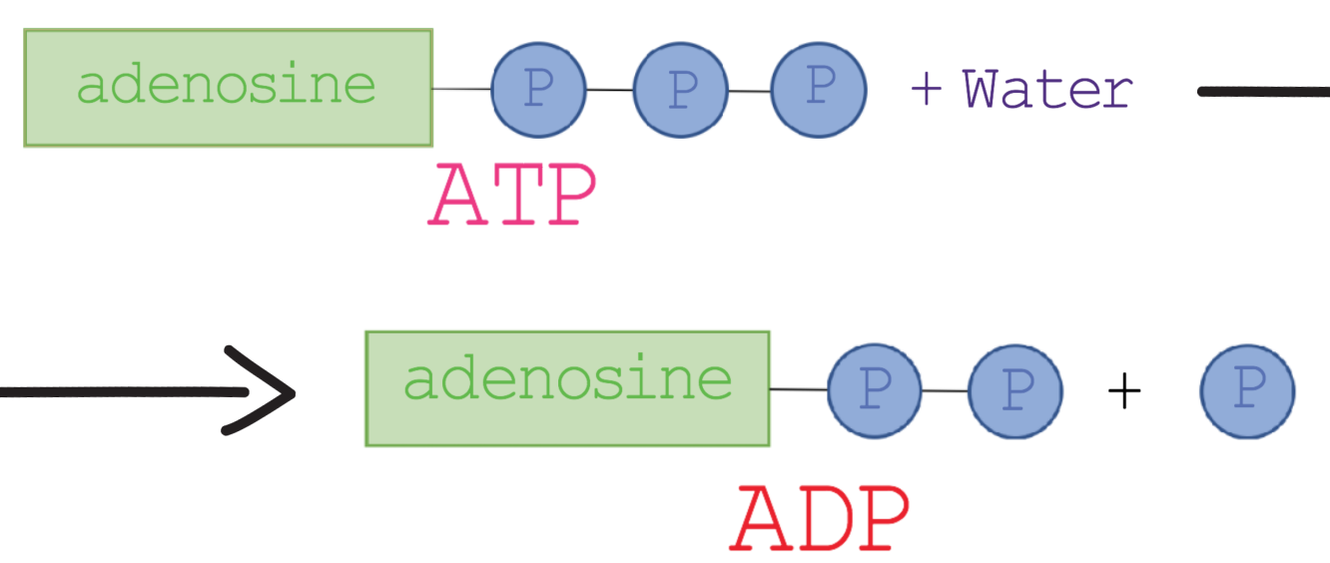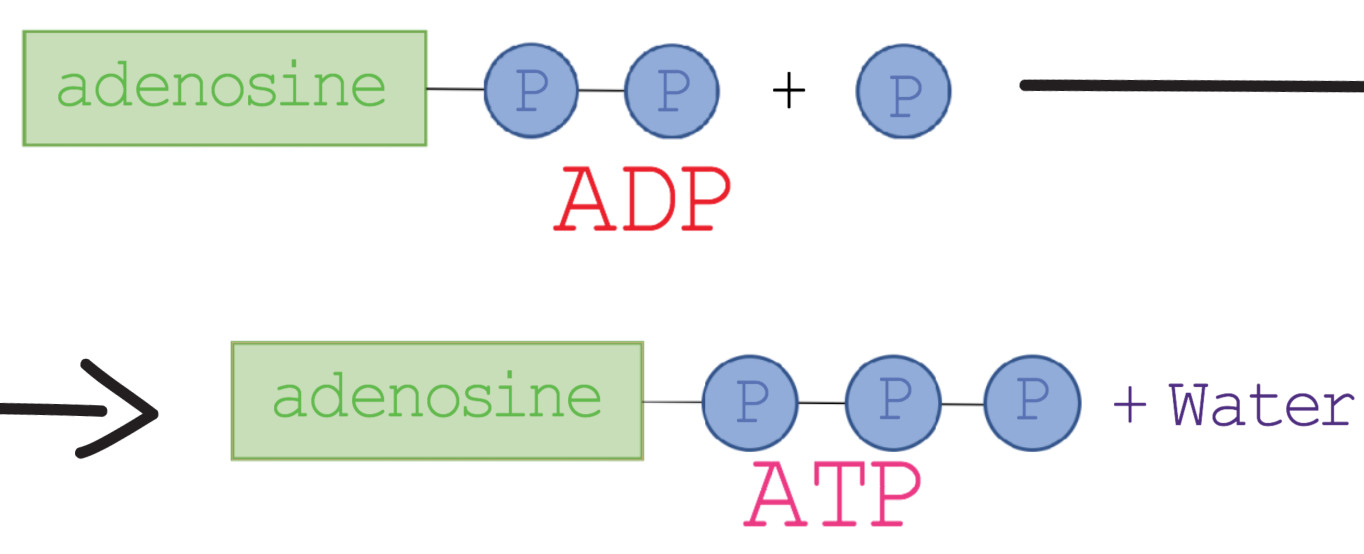7.3 The Breakdown & Regeneration of ATP
|
|
Adenosine triphosphate, which is usually shortened to ATP, is sometimes referred to the energy currency of cells. This is because ATP passes energy that has been produced through respiration to other processes that need to use energy in order to occur (for example, active transport needs energy to occur – active transport is looked at in section 3.3). ATP is made up of adenosine (an organic molecule) and three phosphate molecules (inorganic molecules).
Releasing Energy from ATP
Energy is released from ATP when it is broken down in a cell. Water is needed to break down ATP. ATP is broken down by the end phosphate breaking off. This creates adenosine diphosphate (ADP), a single phosphate and energy.
Energy is released from ATP when it is broken down in a cell. Water is needed to break down ATP. ATP is broken down by the end phosphate breaking off. This creates adenosine diphosphate (ADP), a single phosphate and energy.
Creating ATP
ADP can be recharged back to ATP by using energy that is produced during respiration to add a phosphate molecule back on ADP, thus creating ATP. ADP molecules are constantly being recycled to create a constant stream of ATP that is available for the process that take place in cells.
ADP can be recharged back to ATP by using energy that is produced during respiration to add a phosphate molecule back on ADP, thus creating ATP. ADP molecules are constantly being recycled to create a constant stream of ATP that is available for the process that take place in cells.
Energy from respiration is used to turn ADP into ATP. However, these reactions are not 100% efficient and some of the energy from respiration reactions are lost as heat. Humans and animals use this heat energy to maintain a constant body temperature.



